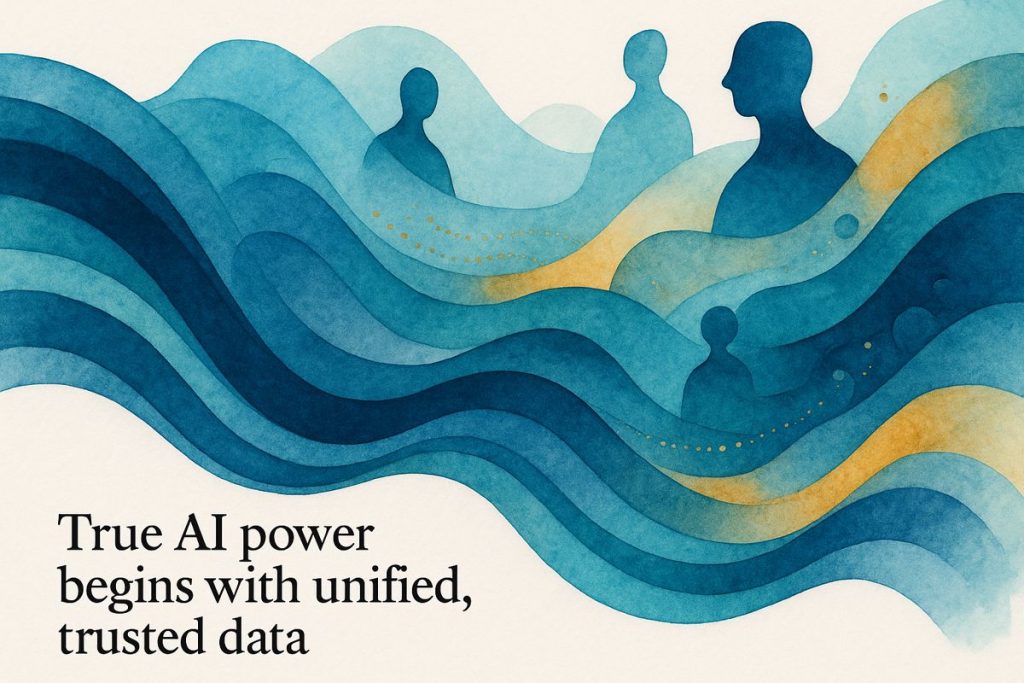Salesforce is buying Informatica for $8 billion to make its data tools much stronger and smarter, especially for AI. Informatica is like a master chef in the data world, helping companies keep their information clean, organized, and trustworthy. This deal isn’t just about adding more tools—it’s about making sure AI can work with the best, most reliable data. Salesforce hopes this move will help it stay ahead in the race to build the most powerful cloud data platform. In short, clean data is the secret sauce, and Salesforce wants the whole recipe.
Why is Salesforce acquiring Informatica for $8 billion?
Salesforce is acquiring Informatica for $8 billion to strengthen its data platform with unified data architecture, robust governance, and advanced metadata management. This move aims to create the industry’s most complete, agent-ready data environment, enabling scalable, trustworthy AI solutions and enhancing Salesforce’s competitive edge in enterprise cloud data management.
An $8 Billion Signal—Not Just Another Polyglot Merger
There’s a peculiar electric buzz in the air when a company like Salesforce tosses $8 billion onto the table and says, “We want Informatica.” Not a small sum, even by the standards of Silicon Valley, where decimal places often get lost in the ether. On May 27, 2025, Salesforce shook the dust from the enterprise tech landscape, announcing its intent to acquire Informatica—an acquisition that’ll be talked about at conferences and whispered about in Slack channels until, well, something even splashier comes along.
Let’s get the bones of this deal out of the way. Salesforce is shelling out $25 per Informatica share, a deal that values Informatica somewhere north of its recent market cap (for those who keep Bloomberg open in the background). This is all cash, no derivatives, no “funny money.” The ink won’t dry until regulators have peered under every hyperspectral stone—probably by early 2026, when Salesforce’s fiscal ‘27 begins (February 1, to be exact).
I have to admit, the first time I saw Informatica issue those flat denials about a sale, I smirked. Back in my consulting days, I’d get those “we’re not for sale” emails, only to be onboarding with new owners two quarters later. There’s a certain burnt-toast inevitability to these things, like the smell of Starbucks at 6 AM.
The Anatomy of Informatica: Not Just a Data Plumbing Company
Their kit runs the gamut: data integration, data quality, governance, metadata management, MDM, lineage tracking—the kind of stuff that makes data scientists’ eyes light up and compliance officers breathe a little easier.
Ever tried to run a predictive model without clean, compliant data? It’s like trying to paint the Sistine Chapel with a mop. Informatica’s value isn’t just technical—it’s existential for organizations chasing AI at scale.
I had to stop and ask myself: why did Salesforce bite now? Maybe it’s the accelerating arms race for “agent-ready” data platforms—those mythical environments where AI agents roam free, gliding through governance controls like eels in a kelp forest. (Don’t worry, the metaphor works; agentic AI is slippery, dangerous, and, occasionally, beautiful.)
Emotion? There’s always a hint of awe when a company builds a product that’s both esoteric and essential. Informatica is like the unsung sous-chef in a Michelin kitchen; you don’t see them, but you taste their work in every bite.
The Chessboard: Integration, Strategy, and the Whiff of Competition
So, why does Salesforce want Informatica, when it already boasts Data Cloud, MuleSoft, Tableau, and the ever-expanding sprawl of Customer 360? Here’s the trick: AI agents—especially the ambitious, self-improving “agentic” kind—require data that’s not just big, but curated, context-rich, and, crucially, governed.
Marc Benioff (who probably dreams in metadata) framed the deal as a play to build “the most complete, agent-ready data platform in the industry.” That’s a bold claim, but let’s cut through the Silicon Valley incense. Informatica offers three things Salesforce craves right now: unified data architecture, bulletproof governance, and scalable metadata management. Did I mention that Informatica’s secret sauce—its ability to track data lineage—is about as rare as a non-hyperbolic press release these days?
Salesforce is betting it can weave Informatica’s stack into its own tapestry: Data Cloud for unified customer insight, MuleSoft for system interconnectivity, Tableau for vivid analytics, and Customer 360 for panoramic relationship management. This isn’t just synergy—it’s the slow, inevitable tectonic shift toward industry consolidation.
There’s probably a lesson there: never bet against a company with this much institutional caffeine.
The Broader Zeitgeist: AI, Data, and the Vexing Problem of Trust
Here’s where the story gets chewy. The real challenge in AI isn’t inventing clever algorithms (though I tip my hat to the teams at OpenAI and DeepMind); it’s about making sure your data isn’t a garbage fire. Informatica brings scalable, compliant, and transparent data plumbing. That’s a paradigm shift, not just a portfolio expansion.
Salesforce’s acquisition telegraphs to the world: the next era of AI isn’t about who has the fastest model, but who owns the cleanest, most agent-ready data. Will this trigger another round of SaaS mergers? Almost certainly. Expect companies like Snowflake and Databricks to start eyeing their own “governance” targets with calculated hunger.
Quick anecdote: last quarter, I consulted for a manufacturing client who tried to automate procurement using an LLM. They spent months wrangling with dirty data—SKU mismatches, missing metadata, you name it. The AI ended up ordering 1,000 left shoes. Oof. That’s when you realize: governance is not a feature. It’s the main event.
By the way, if you’re looking for more color
